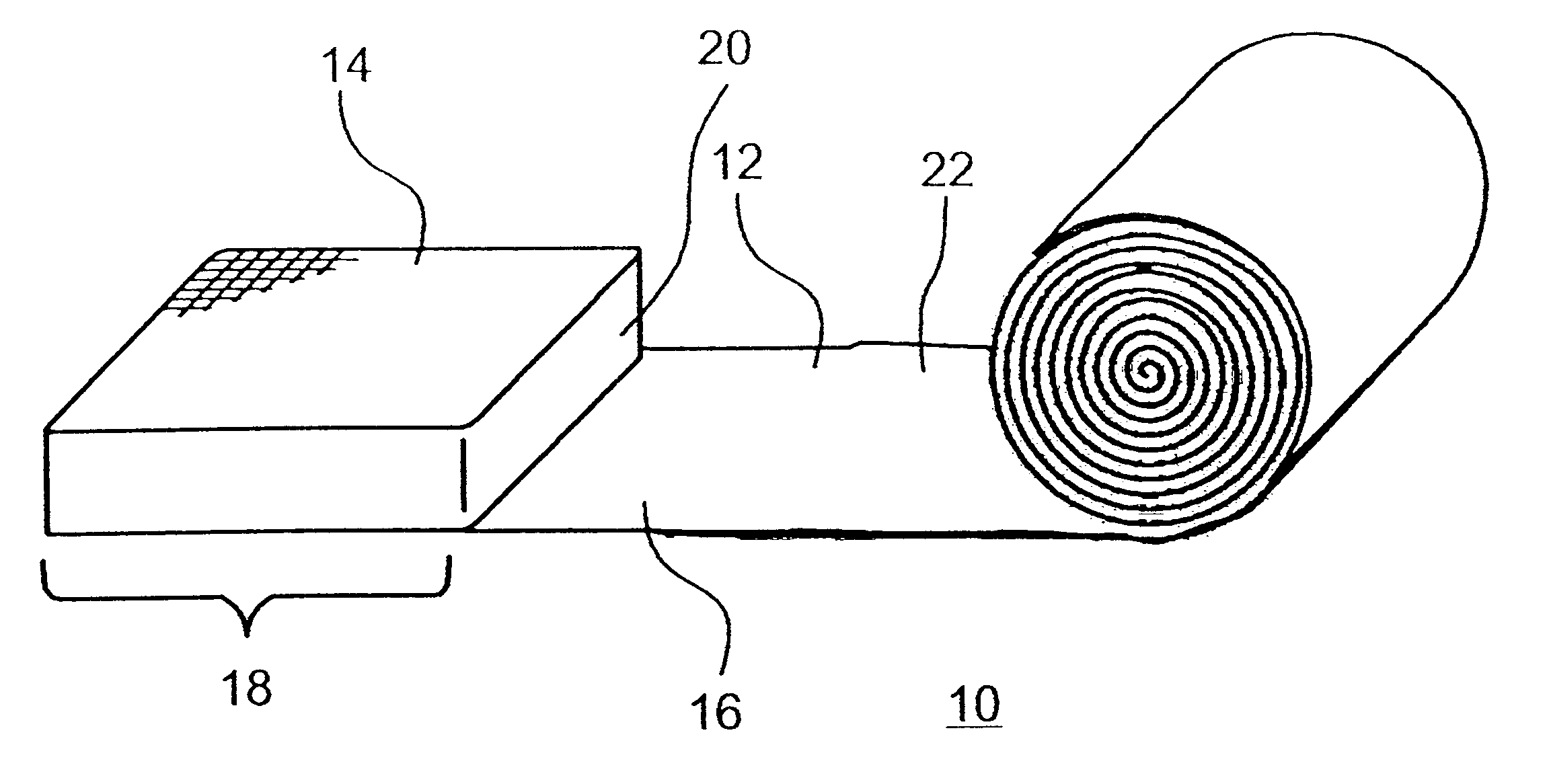Elastic adhesive wound dressing for control of bleeding and for dressing bleeding wounds
a technology of elastic adhesive and wound dressing, which is applied in the field of elastic adhesive wound dressing for control of bleeding and for dressing bleeding wounds, can solve the problems of care providers, denying the performance of any other tasks, and direct compression
- Summary
- Abstract
- Description
- Claims
- Application Information
AI Technical Summary
Problems solved by technology
Method used
Image
Examples
Embodiment Construction
Comparative Evaluation of Elastic Adhesive Dressing and Other Compression Techniques Under Simulated Field Conditions
Materials and Experimental Methods
Compression techniques: Compression was achieved by the elastic adhesive dressing and two traditionally employed techniques, direct manual compression and the military bandage.
Elastic adhesive dressing: In this study the elastic adhesive dressing consisted of an "ace-bandage" with adhesive properties, either COBAN.TM., (3M Health Care Co., St. Paul, Minn., U.S.A.), normally used for post-surgical wound covering or PEG.TM. brand (Becton Dickinson Co., New Jersey, U.S.A.), combined with an eccentric, non-adhesive, absorbent contact pad. In order to judge whether a rigid, protruding body enhances pressure where the elastic adhesive dressing failed to reach satisfactory pressures, a 5.times.5.times.2.5 cm block of wood or rigid plastic was inserted into the external aspect of the contact pad, the elastic adhesive bandages sealed above the...
PUM
 Login to View More
Login to View More Abstract
Description
Claims
Application Information
 Login to View More
Login to View More - R&D
- Intellectual Property
- Life Sciences
- Materials
- Tech Scout
- Unparalleled Data Quality
- Higher Quality Content
- 60% Fewer Hallucinations
Browse by: Latest US Patents, China's latest patents, Technical Efficacy Thesaurus, Application Domain, Technology Topic, Popular Technical Reports.
© 2025 PatSnap. All rights reserved.Legal|Privacy policy|Modern Slavery Act Transparency Statement|Sitemap|About US| Contact US: help@patsnap.com



